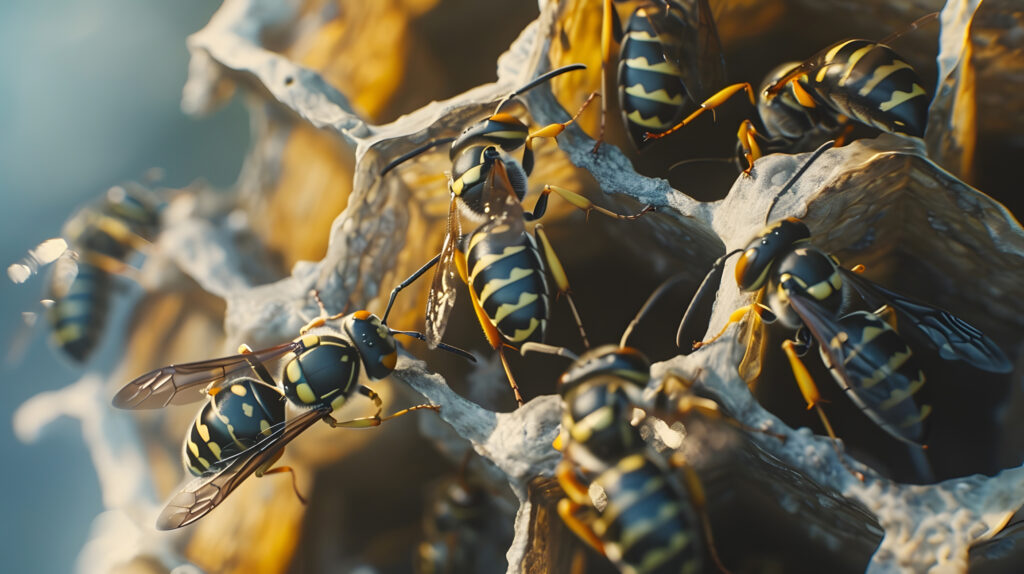Wasp Benefits and Facts

Wasps are misunderstood creatures and often invoke fear in those who are allergic to their stings and others who just don’t want to get stung or bothered! Most wasps do not want to sting and only sting when threatened or when guarding their nest. Like most other insects and arthropods, they mostly want to find food and water to survive.
There are over 30,000 species of wasps, solitary and social, and they play an important role in the ecosystem. Paper wasps and yellow jackets feed on other insects like caterpillars, beetles, and aphids, reducing the need for pesticides on farms. They help maintain balance as they are predators for some insects and prey for birds and other insects. Eliminating wasps would throw off that balance and would result in an increase in what they eat and decrease in animals that feed on them.
Social wasp species like paper wasps and yellow jackets have a hierarchical structure, with workers, queens and drones performing certain tasks and chores. Many wasps make nests out of chewed wood fibers, using their saliva to form a lightweight and strong nest. They communicate using pheromones, or scents to alert the other members of danger or food sources. If you disturb a nest the wasps will release an attack pheromone that tells the workers to attack the enemy. Ground hornets like German Yellow Jackets, or Southern Yellow Jackets will attack in droves if disturbed.
One of the more important benefits of wasps is in the role of nature’s decomposers. Wasps from the family Vespidae break down organic matter and feed on decaying fruits and dead insects. This helps recycle nutrients back into the soil and maintaining the soil fertility.
There are also parasitic wasps, which lay their eggs on other insects where they feed on the host and control pest populations. Cicada killer wasps will dig burrows in the ground for their larva to feed on the cicadas.
The largest wasp in the world is the Asian giant hornet (Vespa mandarinia). Native to East Asia, it can reach lengths of up to 2 inches and has a wingspan of around 3 inches. Known for its distinctive yellow and black markings, the Asian giant hornet is notable not only for its size but also for its potent sting, which can be quite painful. These hornets are social insects that live in colonies, and they are primarily predators of other insects, including honeybees.
The smallest wasp in the world is the Megaphragma caribea, a parasitoid wasp which lays its eggs inside the larva of other insects. It is only 0.14 mm (0.0055 in.) and one of the smallest insects known. It lives in the Caribbean.
